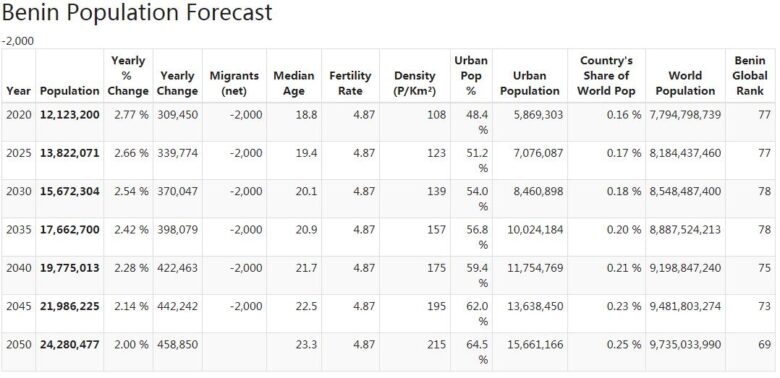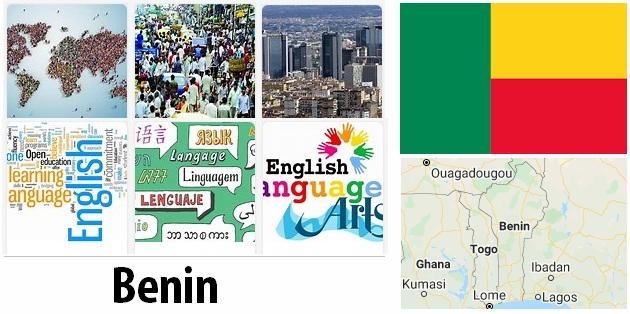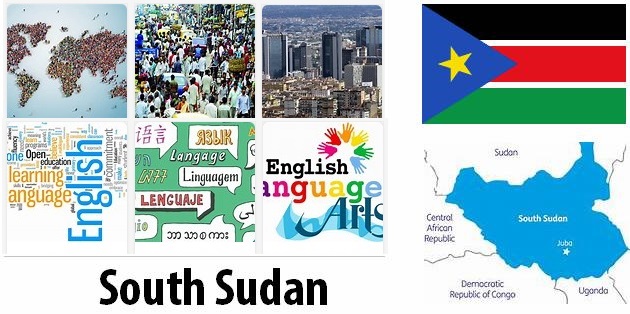Benin Population and Language
Southern Benin is one of West Africa’s most densely populated areas. Around three-quarters of the country’s fast-growing population lives on slightly more than a tenth of the land area. The fastest growing cities and the large number of immigrants from the countryside have doubled the number of urban dwellers since 1990. Benin also has a young population: of the more than ten million residents, almost a third are estimated to be between 10 and 24 years.
Fon in the south is the largest of the country’s approximately 40 different ethnic groups. Other major groups are the Adja people, mostly living in the southwest, and Yoruba who live in southeast and central Benin. Fon and Yoruba favored the residents of the north during the country’s time as a French colony (see Older History) and they received training and work in colonial administration, among other things. The ethnic groups in the north – including Bariba, Dendi and Somba – are less Western influenced than the people in the South.
- COUNTRYAAH.COM: Key populations estimated size and data of Benin, including population density of how many people per square mile. Also included are facts for population and language.
Benin also has a small number of Indians and Lebanese who are mainly employed in the trade. More recently, immigration from neighboring countries such as Togo and Nigeria has also occurred. In connection with political turmoil in Togo in 2005, more than twenty thousand Togolese fled to Benin. Today, most people have returned.
Despite the fact that there are so many different groups of people, and although one can see a certain division between the south and the north, unlike in several neighboring countries, no serious ethnic contradictions have arisen. In recent years, however, in the northern part of the country, rivalry between the resident population and the livestock nomads (fulani or peul) has sometimes led to violence.
French is the official language. However, it is primarily spoken in the cities. Everyday people often use their own languages, but most of them are at least bilingual. In the north, bariba and fulani are the most important indigenous languages, in the south, mainly phon and yoruba are spoken.
FACTS – POPULATION AND LANGUAGE
Population
fon 39%, adja 15%, yoruba 15%, bariba 9%; small groups of fulbe, otamari, dendi, somba, mina, goun, indians, Lebanese and others (census 2002)
Number of residents
11 175 692 (2017)
Number of residents per square kilometer
99 (2017)
Percentage of residents in the cities
46.8 percent (2017)
Nativity/birth
37.0 per 1000 residents (2016)
Mortality/mortality
9.2 per 1000 residents (2016)
Population growth
2.8 percent (2017)
Fertility rate
5.0 number of births per woman (2016)
Percentage of women
50.1 percent (2017)
Life expectancy
61 years (2016)
Life expectancy for women
62 years (2016)
Life expectancy for men
59 years (2016)
Language
French is the official language; fon, yoruba, mina, bariba, dendi, haussa are the largest among some 50 native languages
2009
April
Beninese flights are banned in the EU
The EU prohibits all airlines from Benin from flying to countries within the Union as they do not comply with aviation safety requirements.
February
Large amount of oil found
Benin announces that “significant quantities of” offshore oil have been found at the border with Nigeria.




